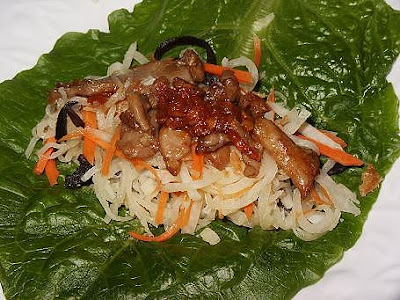Dried lily buds (金針菜) is also called golden needle vegetable but don't confuse it with dried golden needle mushroom (dried enoki mushroom) as they look almost similar. Usually found in Asian supermarket where they sell dried woodear and mushroom. Once open, I would keep it in a Ziploc bag and in the refrigerator. When you want to use it, you need to soften it in the water first. I often see dried lily buds in auspicious Chinese dishes because it symbolizes wealth for the Chinese when celebrating Chinese Lunar New Year. Shiitake mushroom symbolizes longevity + opportunity and yellow color tofu symbolizes wealth and happiness (like dried beancurd stick and fried tofu puff). Since frozen tofu is yellow in color and yellow means gold in Chinese, it should symbolizes wealth and happiness. Whereas the fresh white tofu is not included as it is unlucky for new year as the color white means death and misfortune. You can braise your tofu in a sauce to change the color or pan-fried the tofu until golden before stir-frying to change your luck if you are superstitious like me.
This would make a great vegetarian Chinese New Year dish too! The frozen tofu cubes and mushrooms soaked up all the flavor of the sauce and made this dish such a plus! Imagine biting into the spongy and juicy cubed tofu and flavorful mushrooms!!
I am sharing this recipe with Aspiring Bakers #15: Auspicious Dishes for CNY hosted by Wen's Delight. Go check out the roundup on Feb 1st. I know I will! :-)



































